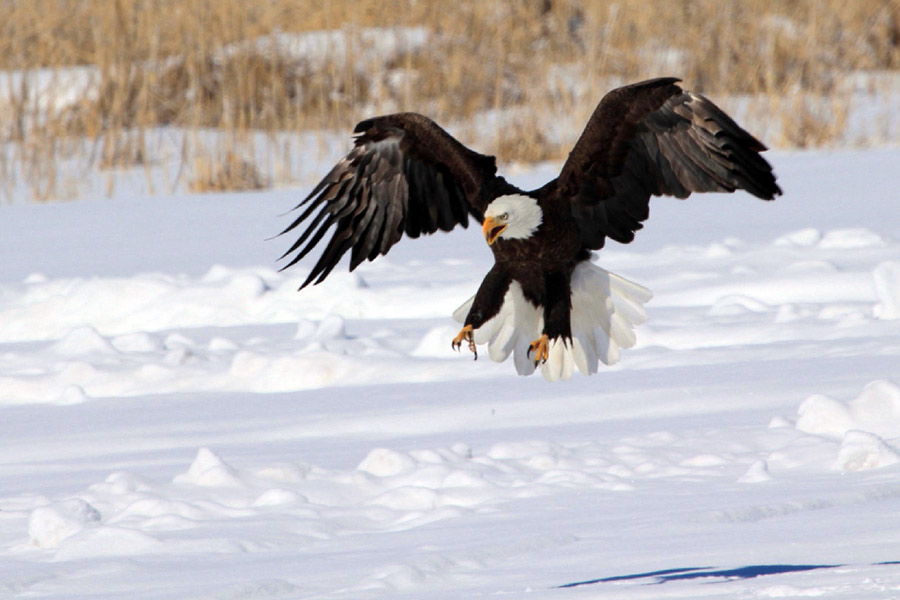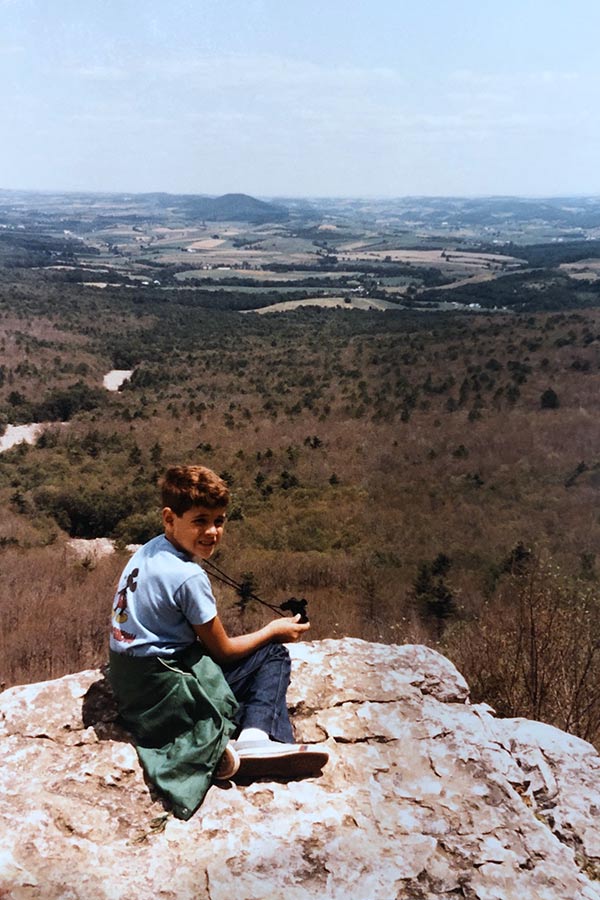Spying my first bald eagle
Spotting these iconic birds in the wild is an unforgettable experience
Billy Fenimore
Director
Eccles Wildlife Education Center
When I was a child, my father and I would spend hours each day adventuring outside and exploring the natural world. On one special spring day years ago, our family's destination was Hawk Mountain in Pennsylvania. Located in the northern Appalachian Mountains, this area is a significant migration corridor for hawks, eagles and falcons.
Time passed quickly as we ambled up the trail to the summit, passing through stands of white pine and eastern hemlock. We stopped along the trail often, as my father happily answered the many questions posed by my sister and I. He would grin widely, and drop to one knee to get closer to our tiny faces when he shared his knowledge about the wildflowers dotting the forest floor and the grey squirrels scampering ahead of us.
An eagle in the wild
The hardwood forest thinned as we neared the mountaintop, giving way to an amazing view of many more mountain ridges dotting the landscape.
We looked out over the valley and spied a small dot gliding effortlessly through the skies, gaining in size and beauty as it approached our location. As it got closer, we could clearly see the regal white head, rich chocolate feathers on outstretched wings and brightly-stained talons as the huge bird soared high overhead. A first for me: a bald eagle in the wild! It was also a first for my mother and my sister, and they shouted and pointed at our national symbol soaring above us.
I often reflect back on that special day spent with family and a lone bald eagle atop the hardscrabble rock ridge. And I usually have a wide grin as I get down on one knee to chat with young visitors and share my love for all things wild at the education center. It's even more exciting when they also experience the wonder of spying a bald eagle soaring through the sky.
Fun facts about bald eagles
- Bald eagles aren't bald. The name comes from the old English word "balde," meaning white hair — or for bald eagles, describing their white-feathered head.
- Bald eagles were chosen as the national bird and symbol of the United States of America in 1782.
- In the wild, bald eagles can live up to 40 years.
- Bald eagles fly up to 30 miles an hour and when diving, they can reach 100 miles an hour.
- Bald eagles hold the record for the largest bird nest: The largest bald eagle nest recorded was 9.5 feet wide and 20 feet high, and it weighed more than 2 tons.
- Fish are the main component of a bald eagle's diet.
- Bald eagles can swim. They usually do this when bringing in a large fish to the shore.
- They have excellent eyesight. Bald eagles can see four to five times better than humans can.
At the Eccles Wildlife Education Center — which is located within the Robert N. Hasenyager Great Salt Lake Nature Reserve at Farmington Bay — we're fortunate to see many bald eagles return to nest each February. They also visit a variety of other sites all over Utah. Each winter, hundreds of these iconic birds migrate to Utah to escape frozen conditions farther north and find food in more temperate surroundings.

















